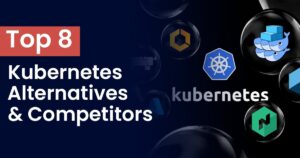
How to prepare for the PL-900 exam
Introduction The Microsoft Power Platform Fundamentals Certification lets you grasp the core concepts and fundamentals required to start on Power Platform. To achieve this certification,
Unlock the Power of FortiGate Mastery with Our Latest Release Fortinet Certified Associate – FortiGate Operator Course. Enroll Now!

Introduction The Microsoft Power Platform Fundamentals Certification lets you grasp the core concepts and fundamentals required to start on Power Platform. To achieve this certification,

Introduction The demand for scalable, reliable, and secure cloud services has never been higher in today’s digital landscape. AWS Global Infrastructure is a beacon of

Introduction The way we manage container orchestration has been entirely transformed by Kubernetes, which has made application deployment, scaling, and management much more accessible. It’s
Table of Contents
Docker and Kubernetes are the most extensively used tools in the modern cloud-native container ecosystem. These two open platforms have enabled the container revolution to thrive because of the functionality they provide and the directness of their communities. Docker and Kubernetes achieve different goals, although they are frequently used together. Understanding how modern containers are produced, deployed, and managed in production relies on this distinction.
Container adoption has increased in lockstep with the rise of microservices. Containers are a practical approach to packaging software for these applications since they isolate code, including runtime dependencies. However, when the number of containers grows, scalability becomes a challenge. DevOps engineers frequently use standard technologies to produce containers and orchestrate their deployment to enhance efficiency and resource optimization.
This article will compare Docker and Kubernetes, examine their architectures, and highlight the pros and downsides.
If you want to learn about Docker and Kubernetes, IPSpecialist is considered the best place.
Docker is a program that allows you to package and execute containers. Docker assists in creating standard containers that have all of the components required to run independently, such as code, dependencies, and libraries. Docker is a container management system rather than a container format.
Typically, developers will use a command-line interface (CLI) to communicate with the Docker client and run commands like Docker build or Docker run. These are turned into Docker daemon Docker API commands, which tell the system how to build the environment. Docker images, executable templates are stored in a Docker registry. As a result, Docker containers are just copies of these images. Docker Hub is a significant public registry with many ready-to-use container images.
Docker was created in 2013 and has since come to characterize the modern container movement. The Open Container Initiative (OCI) image definition has been donated as an open standard for the Docker image format. People commonly refer to Docker, the container packager tool, when talking about Docker containers, and this is not the same as Docker Inc., the corporation.
The following are some of the significant advantages of using a Docker container:
The following are some significant Docker container disadvantages:
Kubernetes, sometimes known as K8s, is a robust, comprehensive set of tools designed to automate many aspects of the application life cycle.
At least one cluster is present in every Kubernetes implementation. Nodes make up a cluster, and these nodes host pods. A running set of containers is included in these pods. These components are managed by a control plane in a Kubernetes instance.
The following are some of the advantages of using Kubernetes:
The following are some of the disadvantages of using Kubernetes containers:

Docker and Kubernetes are both cloud-native open-source projects. Additionally, major cloud service providers offer Docker and Kubernetes components as part of their managed services. Docker is for packaging containerized apps on a single node, but Kubernetes is for running them across a cluster. These programs are frequently used in tandem since they accomplish diverse tasks.
Docker and Kubernetes can both be used alone, of course. While a significant corporation may profit from Kubernetes and be able to finance its upkeep, a smaller initiative may be better off simply using Docker. Another option is for a corporation to use Docker or OCI containers with a container scheduler. Similarly, Kubernetes is most usually associated with Docker containers, but it may be used with various other container types and runtimes.
Almost all IT firms migrate their infrastructure and architecture to cloud and DevOps trends in today’s world. Cloud computing, containerization, and orchestration solutions are all over the place. Names like Docker and Kubernetes, which have altered how we design, develop, deploy, and ship software at scale, are impossible to ignore when discussing cloud-native.
Docker fixed a problem termed “dependencies.” It makes it exceedingly simple for businesses to run programs in a comparable environment without worrying about dependencies or operating systems because it comes with its OS libraries.
Docker and Kubernetes have both risen to meet the demands of microservices development. Teams must iterate quickly and deliver highly available services to end customers under this paradigm. Containers offer a lightweight, scalable solution to deploy these apps, but scaling them is difficult.
Migrating to modern container management technologies will result in faster deployment and cost savings. Though K8s have a steep learning curve and require continuing maintenance, they pave the way for a scalable container management future.
© 2022 All rights reserved | Privacy Policy | Terms and Conditions | Sitemap




